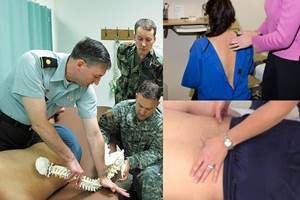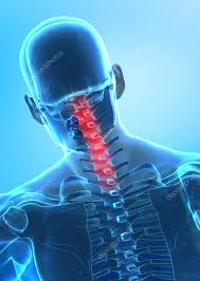Why Do Chiropractors Use “Palpation”?
 Palpation is the most frequently used diagnostic technique in chiropractic care and is a clinical cornerstone of most physicians’ practice. It is a manual, non-invasive method of determining where a patient has structural or functional problems in the body.
Palpation is the most frequently used diagnostic technique in chiropractic care and is a clinical cornerstone of most physicians’ practice. It is a manual, non-invasive method of determining where a patient has structural or functional problems in the body.
In palpation, chiropractors use their hands and their detailed knowledge of anatomy to effectively see what is happening in the spine and its supporting structures, such as the muscles, tendons and ligaments. As your chiropractor palpates your spine, he or she will look for subluxations in your vertebrae, which are misalignments that may be causing pressure on spinal nerves, or other abnormalities that may be causing problems in your musculoskeletal system.
There are essentially two forms of palpation—static and motion. As the name suggests, in static palpation the patient remains still while the chiropractor palpates the spine and tissues to identify any misaligned vertebrae, protruding disks, and areas of pain or inflammation. In motion palpation however, the patients joints are mobilized, bending and flexing under the expert eye and hand of the chiropractor. He or she will move various joints through different planes, observing the patient’s range of motion and where a joint may “lock up.” They will also measure the patient’s amount of flexibility, muscle strength, stiffness, reflexes and general neurological function.
Palpation may be used at every visit to your chiropractor so they can quickly determine whether your condition has improved or not since your last visit and they can see which areas need the most care and attention. Based on what your chiropractor finds during palpation, he or she may then order additional diagnostic tests—an x-ray, MRI or CT scan, for example—to get a more detailed view of your condition.
Your chiropractor will also perform a visual examination to detect any swelling or abnormal curvature of the spine, and will observe your gait to see the coordination of your head, neck and pelvis as you move. They will also take a full medical history and ask about the location, frequency and severity of any present and past conditions.
Based on all these diagnostic tools, your chiropractor can better determine the type and frequency of treatment necessary to resolve your condition in a way that is holistic, drug-free and non-invasive. Palpation is simply another tool in the chiropractor’s arsenal of techniques to keep you moving well and pain-free.
With all of the snowy weather we have had, you may need your back palpated! Be sure to schedule an appointment with Dr. Oblander by calling 406-652-3553.
